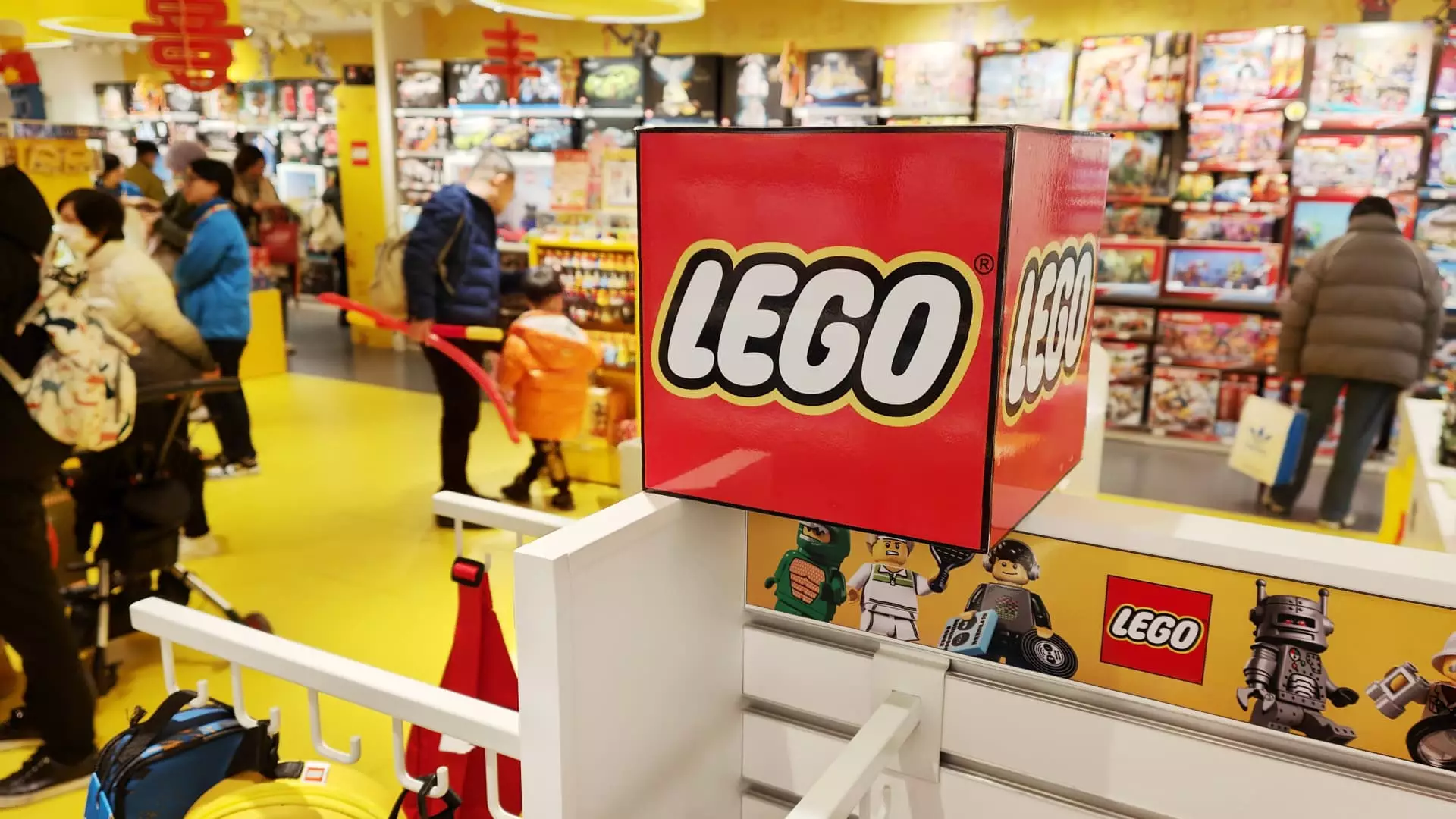The toy industry faced a significant sales slump in the first half of 2024 due to inflation, which impacted consumer spending habits. However, amid this challenging environment, one company managed to defy the odds and emerge as a market leader – Lego. The Danish toymaker reported a remarkable 13% jump in revenue, reaching 31 billion Danish krone, equivalent to approximately $4.65 billion. This growth trajectory is a testament to Lego’s resilience and ability to adapt to changing market dynamics.
Niels Christiansen, CEO of Lego, highlighted the company’s strength across its product portfolio, particularly in categories such as Lego Icons and Lego Creator. In addition, Lego’s partnership with Epic Games’ Fortnite has also been a significant driver of growth. Unlike the previous year, where consumers were seen trading down to lower-priced sets, the trend has now shifted towards higher volume purchases. Christiansen noted that consumers are not further trading down this year, indicating a stabilization in purchasing behavior. The growth observed by Lego is primarily driven by an increase in volume sales.
In contrast to Lego’s success, publicly traded rivals such as Mattel and Hasbro faced challenges in the first half of 2024. Mattel experienced a 1% decline in net sales, while Hasbro reported a significant 21% drop in net revenue. Mattel’s sales were impacted by tough comparisons from the previous year, driven by strong performance in the “Barbie” product line. Hasbro, on the other hand, continued to face the repercussions of its divestment of eOne. Lego’s ability to outperform its competitors highlights the strength of its brand and product offerings.
Lego’s success can be attributed to its focus on diversification and innovation. The company offers a diverse range of products that cater to both children and adults. In addition to sets based on popular franchises like Harry Potter and Star Wars, Lego provides consumers with innovative design options to build various items such as flowers, succulents, artworks, and animals. This diverse product lineup appeals to a wide range of consumers and contributes to Lego’s sustained growth.
While Lego has seen strong sales in the U.S. and Europe, the Chinese market has presented some challenges. Consumers in China are spending less on higher-ticket items, leading to a decline in purchasing frequency. Despite this, Lego remains committed to expanding its presence in China, recognizing the long-term potential of the market. The company has opened a significant number of stores in China and plans to continue its expansion efforts in the region.
Lego has also prioritized sustainability, significantly increasing the use of renewable and recyclable materials in its products. This commitment to sustainability not only benefits the environment but also demonstrates Lego’s leadership in corporate social responsibility. The company’s willingness to invest in sustainable materials without passing on the costs to consumers reflects its dedication to making a positive impact.
Lego’s resilience and success in the face of a challenging toy industry slump exemplify its strong brand image, product innovation, and strategic market expansion efforts. By focusing on diversification, innovation, and sustainability, Lego has solidified its position as a market leader and continues to set new benchmarks for the industry.


Leave a Reply